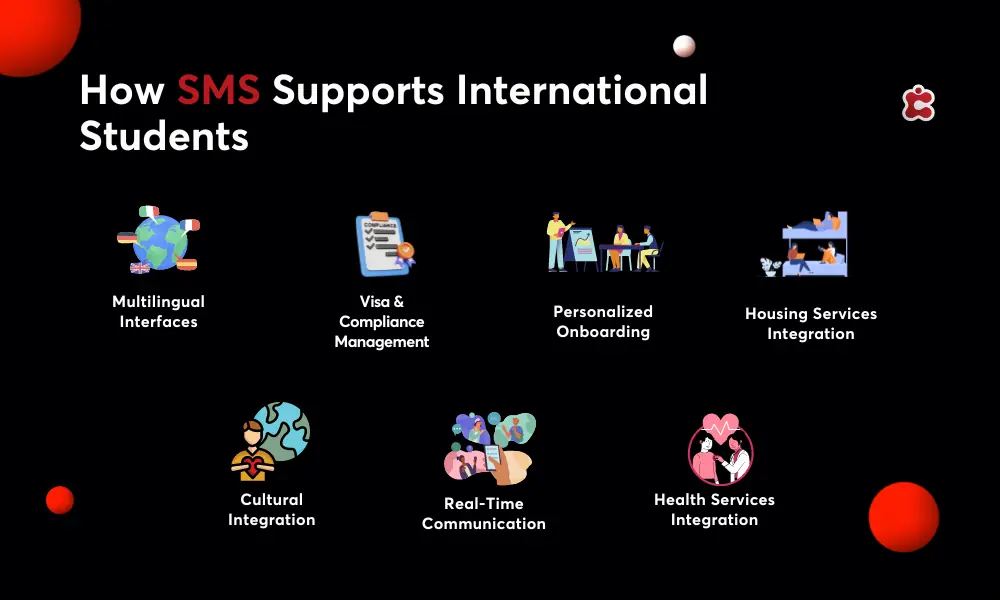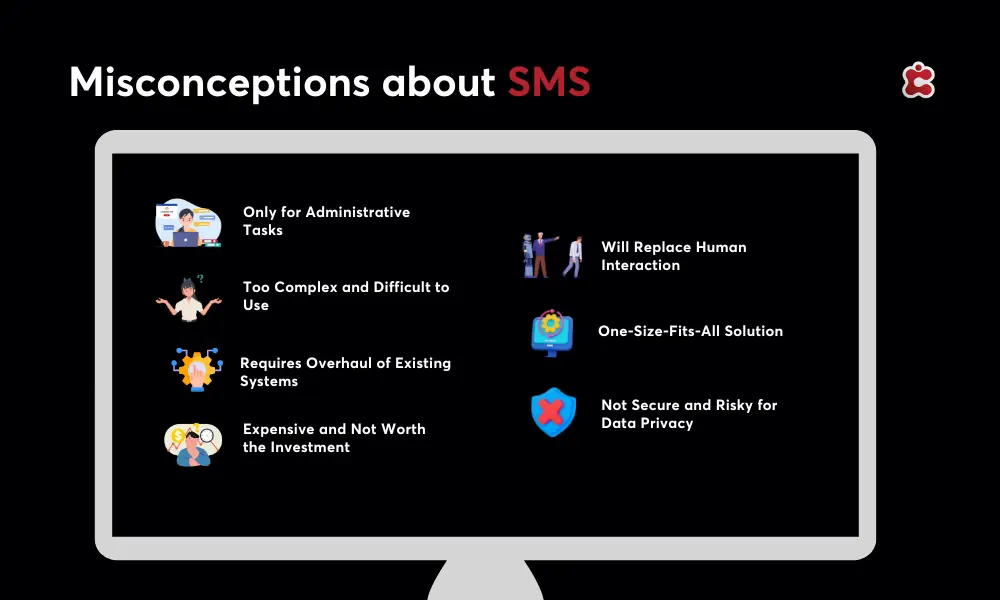All students need support. And when learning a language that isn’t your first, that journey can feel like climbing a mountain. English is now the most studied language in the world. That means for many colleges, there is a growing population of English Language Learners (ELLs). But these students aren’t just learning a new subject—they’re navigating an entirely new world.
But with the right tools, you can easily support and guide your new learner. One of them being a School Management System (SMS). Think of an SMS as more than just a place to track grades and attendance—it’s a lifeline that helps ELLs stay on track.
We’ll show you exactly how you can use you exactly how to use your SMS to create inclusive environments where ELLs feel seen, supported, and set up for success.
The Rise of ELLs
The number of English Language Learners (ELLs) in higher education is on the rise, reflecting a shift toward more diverse, global classrooms. ELL enrollment across colleges has grown over the past decade. Today, one in four students in higher education comes from a non-English-speaking background, making it more important than ever for institutions to create inclusive environments where all students can thrive.
ELLs aren’t a one-size-fits-all group. They come from various cultural, linguistic, and socioeconomic backgrounds, each with unique stories and challenges. Some may be international students learning English for the first time, while others might be immigrants or refugees juggling education, work, and personal responsibilities. Alongside academic demands, many ELLs must also navigate cultural differences, homesickness, and language barriers that can make even small tasks—like emailing a professor—feel overwhelming.

School Management Systems (SMS) in ELL Support
When it comes to supporting ELLs, School Management Systems offer more than just organization—they become a powerful ally in enhancing the learning journey. Let’s dive into some key SMS tools that make a difference in the lives of ELL students:
- Personalized Learning Paths
Every ELL student learns at a different pace. SMS platforms let educators customize lessons and assignments to match each student’s language level, ensuring they progress without feeling overwhelmed. - Real-Time Progress Tracking
With SMS, teachers can monitor individual growth in real time—whether it’s language proficiency or academic milestones. Alerts ensure no one slips through the cracks, so students receive extra help as soon as they need it. - Multilingual Communication Tools
Clear communication is essential. SMS systems offer built-in messaging tools with translation features, helping teachers, students, and families stay connected, even if they speak different languages. - Collaborative Learning Spaces
Peer interaction is a key part of language development. SMS platforms provide online discussion forums, group project tools, and virtual classrooms where ELLs can engage with classmates and build their confidence.
Resource Hub: Centralizing Materials for Language Development
Managing resources for English Language Learners in a college setting can be complex. Students often need access to a wide range of materials—from grammar exercises to research articles and tutorial videos—while instructors juggle multiple tools to keep everything organized.
An SMS allows faculty to upload, organize, and categorize resources in a central location. Instead of scattering materials across emails, learning platforms, or shared folders, everything lives under one roof—easily accessible to students and instructors. Professors can curate specific content, like academic writing guides or advanced language tutorials, and align them with course objectives, ensuring that ELLs stay on track with both language development and their academic coursework.
The beauty of using SMS in higher education is the flexibility it offers. Instructors can integrate external resources, such as digital libraries, research databases, or interactive language apps, directly into the system. For ELLs, having consistent access to these resources—anytime, anywhere—provides the opportunity for independent learning. Need to revisit a pronunciation lesson before a presentation? Or review vocabulary terms before an exam? With SMS, students have everything at their fingertips.
Customized Learning Paths: Tailoring Education for ELLs
Here’s a step-by-step guide on how SMS can help craft customized learning plans that cater to individual language proficiency levels:
- The first step is to assess each ELL’s current language skills. SMS platforms can include built-in assessments that gauge listening, speaking, reading, and writing abilities, providing a clear starting point for each student.
- Once proficiency levels are established, educators can collaborate with students to set specific, achievable language goals. SMS tools enable teachers to document these goals, ensuring they are visible and accessible to both students and families.
- With goals in mind, educators can customize the curriculum using the resources available within the SMS. This might include selecting appropriate texts, multimedia materials, and interactive activities that align with each student’s interests and proficiency level.
- SMS platforms allow for continuous progress tracking. Teachers can input data on assignments, quizzes, and class participation, enabling them to see how each student is advancing toward their goals.
- Learning is a dynamic process. With real-time data from the SMS, educators can easily adjust learning plans based on each student’s progress, ensuring they receive the right support at the right time.
- Finally, SMS tools can facilitate regular check-ins with students, encouraging them to reflect on their learning experiences and provide feedback. This two-way communication helps students feel more engaged and invested in their education.
Collaborative Learning: Encouraging Peer Support through SMS
Language learning flourishes in social settings, where students can practice with peers, exchange ideas, and learn from each other. For English Language Learners in college, collaboration plays a crucial role in building confidence and fluency. With the right School Management System, institutions can create opportunities for meaningful peer interaction, making language development more engaging and less intimidating.
SMS platforms simplify group work by enabling educators to create virtual spaces for collaborative learning. Whether it’s assigning students to project teams, facilitating discussion boards, or setting up group chats, SMS keeps everything organized. ELLs can practice English in a low-pressure environment, working alongside native speakers and other students on presentations, case studies, and group assignments. This constant interaction helps ELLs develop conversational skills while building relationships with their peers.
Discussion boards within SMS also promote deeper engagement. Instructors can create forums where students discuss course topics in English, giving ELLs additional writing practice. The asynchronous nature of these discussions allows ELLs to participate at their own pace, giving them time to reflect and express their thoughts confidently.

Classter’s SMS: The Best Choice for ELL Support
When it comes to supporting English Language Learners, colleges need more than just a basic system—they need a solution that simplifies operations while nurturing students’ academic and personal growth. Classter’s School Management System is just that tool. With features designed to meet the needs of both educators and students, Classter offers an all-in-one platform that empowers institutions to help ELLs thrive.
Classter’s customizable learning paths ensure every ELL receives the support they need, no matter their proficiency level. Educators can tailor courses, track progress in real-time, and provide targeted feedback, helping students stay on track toward academic success. From communication tools that connect students and faculty instantly to attendance tracking that ensures no one falls behind, Classter covers every detail.
Our collaboration features create a sense of belonging among ELLs, encouraging them to participate in group projects and discussions, whether in-person or online. Plus, teachers can access professional development resources through Classter, ensuring they have the latest strategies for supporting multilingual learners.
FAQ’s
ELLs need personalized learning paths, access to multilingual resources, and emotional support to succeed academically. They also benefit from consistent progress tracking, family engagement, and peer collaboration opportunities.
SMS platforms support ELLs by offering personalized learning paths, real-time progress tracking, multilingual communication tools, and collaborative learning spaces to enhance engagement and success.
Classter offers a customizable platform with features specifically designed to support ELLs. It enables personalized learning paths, real-time progress tracking, multilingual tools, and collaborative spaces to foster academic and personal growth.

